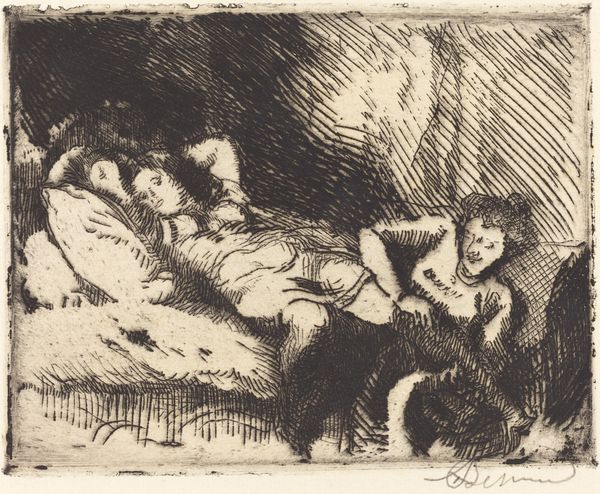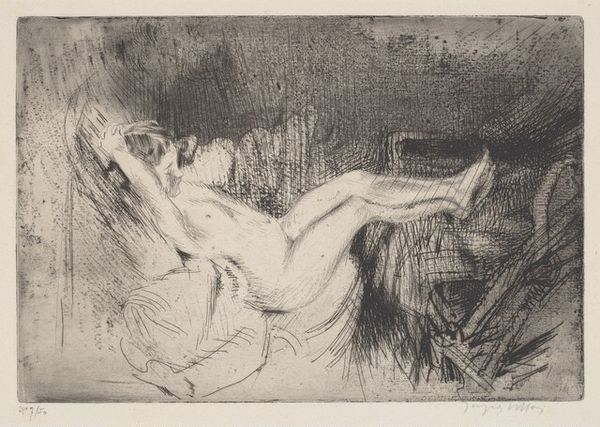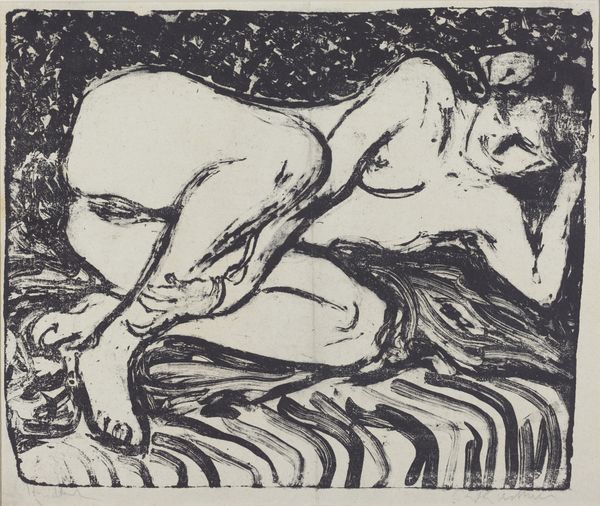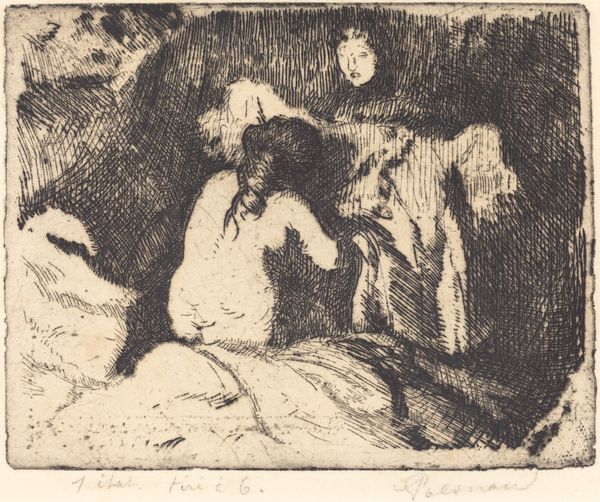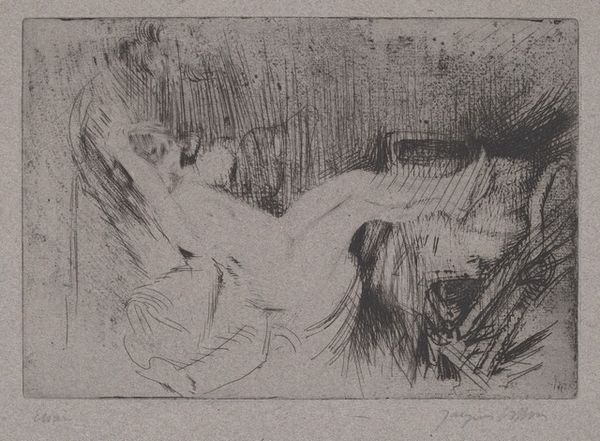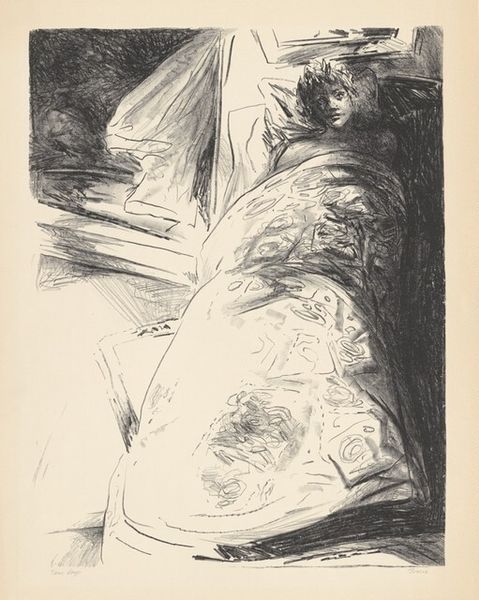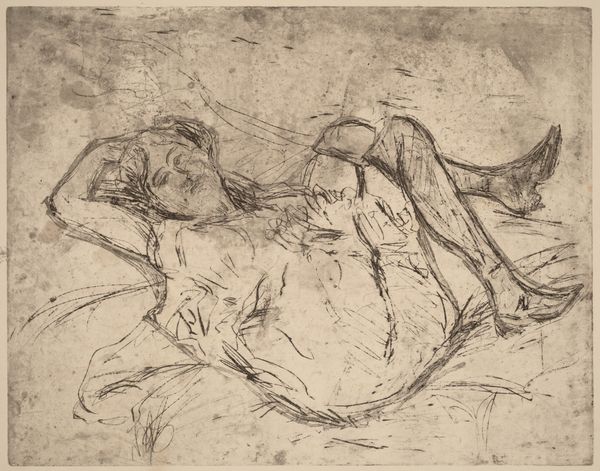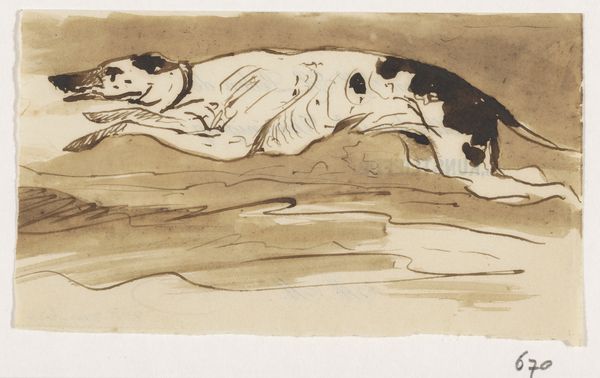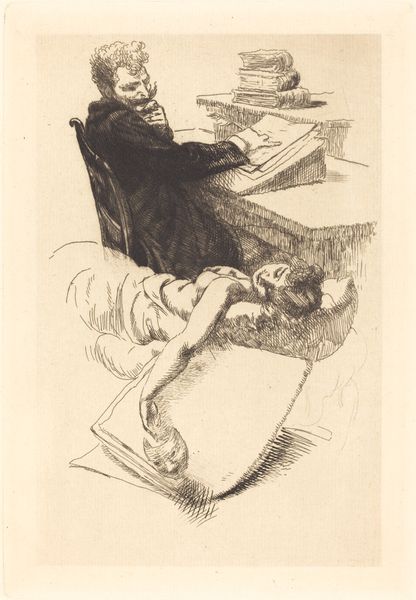
drawing, print, etching
#
portrait
#
drawing
# print
#
impressionism
#
etching
#
history-painting
#
nude
Dimensions: plate: 6 5/8 x 9 7/16in. (16.8 x 24cm) image: 5 3/16 x 7 1/4in. (13.2 x 18.4cm) sheet: 9 9/16 x 14 9/16in. (24.3 x 37cm)
Copyright: Public Domain
Curator: I'm immediately drawn to the textures in this print, the way the lines describe volume and form feels very tactile, even in this scaled-down version. Editor: Indeed. This is Edouard Manet's "Olympia (large plate)," an etching created in 1867 after his controversial painting of the same name. It resides here at the Metropolitan Museum of Art. What strikes you about it, beyond the textures? Curator: Well, the process itself is fascinating. Think about the labor involved in translating the original oil painting to an etched plate. Manet meticulously recreating details by hand, line by line. And the printed result alters the way it looks from oil on canvas. It becomes something repeatable, distributed, consumed in a different way. Editor: Precisely. Consider the social context in which this was created. Manet’s "Olympia" initially caused an uproar at the 1865 Paris Salon because it represented a departure from idealized, classical nudes, portraying a contemporary woman, a courtesan, with unflinching directness. The prints allowed the image, and the controversy, to circulate much more widely, further challenging academic art. Curator: The distribution is critical to the shock of it. What was once confined to the Salon suddenly became accessible, reproducible. It disrupts the perceived value associated with the original, hand-painted version, questioning notions of authenticity and uniqueness, placing "high" art into a more democratized arena of mass culture. Editor: Absolutely, and think about the effect of reducing a large painting into this smaller, more intimate print. It encourages a different mode of viewership, doesn’t it? From spectacle to something more personal, portable even. This plays into the narrative surrounding "Olympia," highlighting the political power dynamics that define public engagement with imagery. Curator: Definitely. By considering it in the broader culture, its function as a commodity and a carrier of meaning becomes really compelling. It highlights not just Manet’s talent but also the social machinery that constructs ideas around art, labor and public engagement. Editor: Looking at it now, the nuances in how prints shift meaning is evident; and reflecting on how images circulate reminds us how they interact with the broader structures that organize artistic values. Curator: Yes, shifting the original through labor alters not only what can be reproduced but also the artwork’s engagement in and reaction from society itself.
Comments
No comments
Be the first to comment and join the conversation on the ultimate creative platform.
